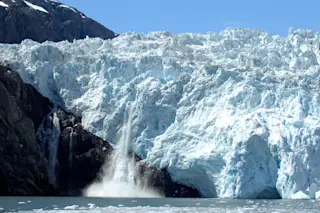Huge delicate coral colonies such as Australia's Great Barrier Reef may owe their existence to an unlikely benefactor— eunicids, a class of ferocious-looking worms.

Courtesy of John Chisholm/Scientific Centre of Monaco
Scientists had long wondered how corals, which spend their lives glued to a rock, manage to establish reefs in the turbulent waters at the edges of continents. John Chisholm, a marine biologist at the Scientific Centre of Monaco, chanced upon an answer after cleaning out his aquarium. One morning he noticed that three coral colonies in the near-empty tank had moved 6 inches overnight. Intrigued, he set up an infrared night-vision camera and captured footage of eunicid worms crawling through the sand, grabbing bits of coral in their jaws, and building primitive shelters (above).
Chisholm believes that the worms, which can grow to almost 20 feet long, construct stable platforms on which coral reefs can grow even if the surrounding sands are constantly in motion. In exchange, the worms gain a lair from which they can emerge to feed. He sees this as a prime example of the self-organizing force of nature. "Here's an incredibly simple organism, not accredited with having much of a brain, able to assemble a habitat," says Chisholm. "And in the process, it creates conditions that can give rise to some of the greatest ecosystems on this planet."














